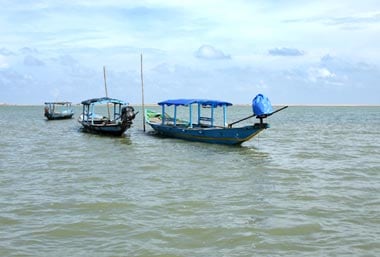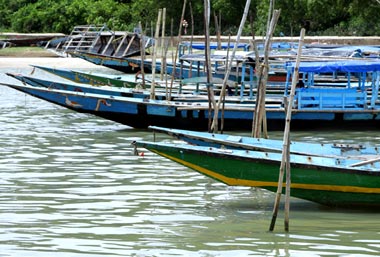Avifauna-rich Chilika, on the east coast of India, is one of Asia’s largest lakes. The wonderfully lush wetlands here, along the shores of the lagoon, have been described as India’s finest, and, not surprisingly, these attract a host of water birds, local as well as migratory. Chilika’s swamps also support the livelihoods of more than 25,000 fishermen, and the lake has been designated a Ramsar Site under the international convention on wetlands. The ecosystem here supports an abundant biodiversity, and shelters a fair number of endangered species.
History
Centuries ago, Chilika used to be a bay, its harbour providing a resting stop for ships on the way east. Being a port, it was an important centre for maritime trade. Chilika was given sanctuary status in 1972, and became a Ramsar Site in 1982.
Geography
Flecked with small islets, much of Chilika Lake (70km long, 15km wide) gets its freshwater from the River Daya, a tributary of the Mahanadi. The lake, mostly shallow, has estuarine characteristics, and the water is an amalgam of freshwater and brackish seawater. To the lagoon’s west are the foothills of the Eastern Ghats.
Weather
The autumn, winter and spring months are the best time to be around Chilika Lake, for this is when the migratory birds come calling.
Flora and FaunaThere are around 200 species of marine life here, crustaceans being among the most preponderant. There are also more than a few species of snakes (estuarine sea, Asiatic file, beaked sea, Javan wart, dog-faced water, smooth water, rat, tree-living cat, as well as bronzebacks and sea boas), while lizards can be spotted around here, as can skinks (a cross between a lizard and a snake), dolphins and sea turtles. The elusive Irrawaddy Dolphin has been spotted in Chilika, though sightings have been infrequent and its numbers are a source of dispute.
In the forests and hills around the lake you’ll find spotted deer and blackbuck. But it’s the birdlife that Chilika is justifiably famous for. Around 150 species of avifauna have been recorded here, more than half that number being migratory birds, which fly in from as far as Siberia, Mongolia (and other parts of northern Asia), the Caspian Sea in central Asia, as well as (closer home), Tibet and Ladakh. Shovellers, pintails, bar-headed geese, Brahminy duck, the Garganey (a species of duck), several species of pochards and pelicans, are among the winter visitors, as are waterfowl, which migrate here in bigger numbers than anywhere else on the Indian land mass. You’ll also sight hundreds of waders, besides flamingos (the lesser and the large) and pheasant-tailed jacanas.
How to reach
Chilika Lake is easily accessible from Bhubaneswar (100km), as well as from Balugaon (100km), Barkul (110km) and Rambha (130km). It is well connected, by road and by rail, to Puri (50km), Kolkata, Hyderabad and Chennai.
Bhubaneswar is the nearest airport, while the railheads closest to Chilika are Balugaon, Rambha and Barkul.







 Share Via
Share Via


